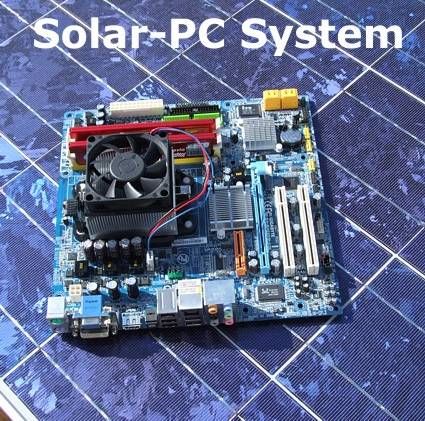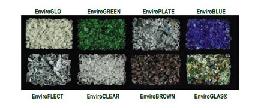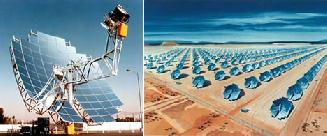
Solar powered PCs a revolution in the making, expectations set for a next generation PC which can be powered by an optional solar panel. Tom’s Hardware editorial staff is working on solar powered PCs to push the limits of technical feasibility for stringent requirements of minimal energy consumption. The 61 watt solar PC, including the monitor, is constructed entirely from desktop components. The core aim was how to make a desktop PC that runs only on solar energy, without any connection to the power grid whatsoever.
Power Supply
Input voltage levels and the type of power supply used play the most important roles. While using the conventional A/C (120/230V) or 16 volt Dc, it has its pros and cons as in using conventional Conventional Input Voltage too much power goes to waste whereas if we use 16 volt DC input voltage we would require a special power supply. Connecting the outputs from the solar panels directly to the PC, so it has 16 V DC of power at its disposal they used a special power supply called the M2-ATX from iTuner- that can handle input voltages in a range from 6 to 28 V DC.
CPU and Cooling
In choosing a CPU for our solar-powered PC, we put strong emphasis on two criteria: low power consumption and dual core architecture. Choose an AMD Athlon 64 X2 BE-2350 processor as it consumes only 8.49 W when idle, and 38.66 W when fully loaded. Cooling plays a vital role so with the processor include a stock cooler that consumes about 1W at maximum fan rotation.
Motherboard
Gigabyte GA-MA69GM-S2H motherboard is equipped with the AMD 690G chipset, and supports both HDMI and DVI with HDCP output, as well as VGA. In tandem with the CPU, this chipset delivers enough computing power to play back high-definition video (HD-DVD or Blu-ray).
Choosing RAM
Those who want to equip their systems with 1 GB of RAM should know that this consumes about 3.8 W of power. Install Windows Vista on our solar-powered PC, go in for 2 GB instead.
Hard Disk
Among the 3.5″ hard disks, the WD1600AAJS – built around a single disk platter – fares particularly well when the system is idle. Because most hard disks are idle most of the time. Its 160 GB capacity is fine for a solar-powered PC, but the 320 GB WD3200AAJS consumes the same amount of power when idle, so you can use this one as well.
If you think that you can also make a Solar Powered PC for yourself then just follow the link below and make one.
Via:Tomshardware




